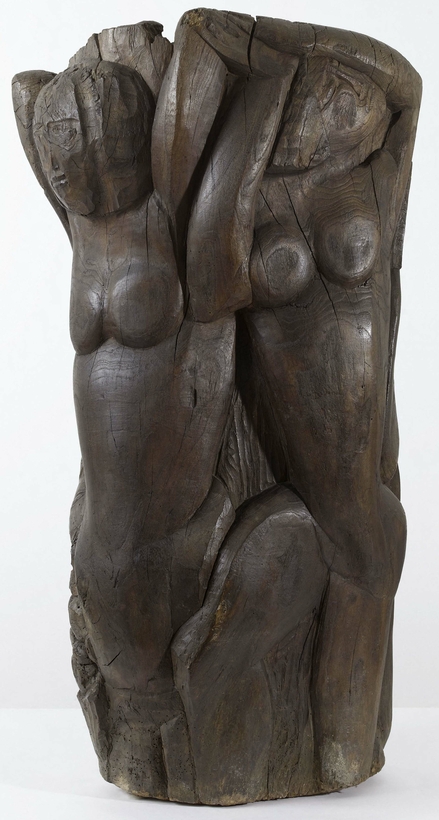Nineteen-year-old Ossip Zadkine, from a family of Smolensk boat builders, arrived in Paris in 1909 with a pipe, a Webster’s dictionary, a copy of The Lives of Great Men, and a suitcase filled with vivid memories of his native Russian forests. “I entered into a lifelong marriage with the vertical column of a pine tree trunk,” he would later say about his quest to tease movement, poetry, and philosophy from the beloved wood that had surrounded him as a boy.
“The Dreamer of the Forest,” an exhibition opening at the Musée Zadkine, in the artist’s former home and atelier, sheds new light on his fascination with nature sauvage and its mythical and spiritual influences on civilization. Juxtaposing works derived from similar animating principles, the curators have set modern greats like Gauguin, Giacometti, and Rousseau alongside contemporary artists such as Ariane Michel and Hicham Berrada. Each in some way carries forth Zadkine’s transformational elixir of human and plant, rational and enigmatic, smooth and rough, tender and aggressive.

“Many contradictory strands pulled at him,” wrote the critic Raymond Cogniat, but Zadkine managed to make an original synthesis of Cubism, Romanticism, Symbolism, Expressionism, and other early-20th-century aesthetic movements. His totem-like and tangled organic forms express a singular notion of humans fusing with nature rather than obliterating it. The curators make this point by highlighting the forest as a matrix of creation, a dynamic border between man and nature, and a source of legend that arouses both fear and enchantment.
Zadkine knew war: he was gassed during his military service in W.W. I and, as a Jew, forced to flee Paris for New York during W.W. II. As soon as he could, he returned to his idyllic atelier, a hidden sanctuary to this day located in the busy Montparnasse neighborhood that once housed so many artists. There, in the garden, La Forêt Humaine (the Human Forest)—a bronze cast of a raw postwar sculpture—lays bare his fear of “a disastrous tomorrow [of] broken forms, chaotic in their decline.” Zadkine knew that the wild forest also lives within us. But he remained hopeful. His career flourished and he became an influential teacher, imparting a pantheistic lyricism to his students. “We are particles of an immense cosmos,” Zadkine told them, “and we must know how to fulfill our great role.” —Patricia Zohn

